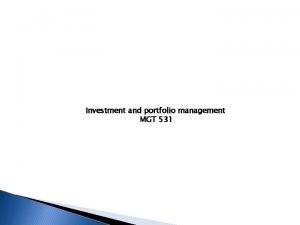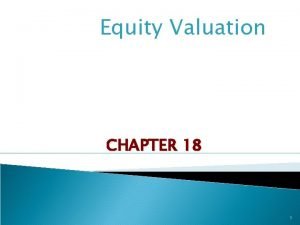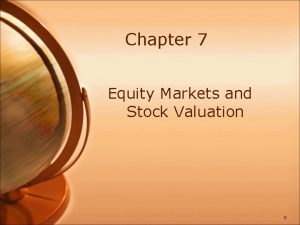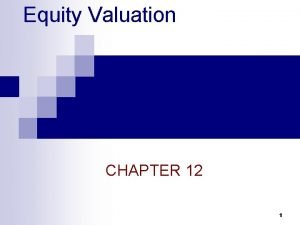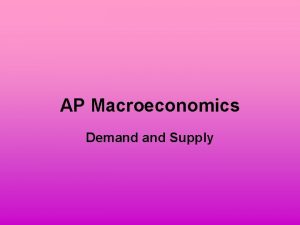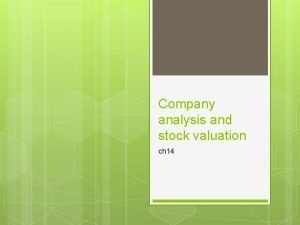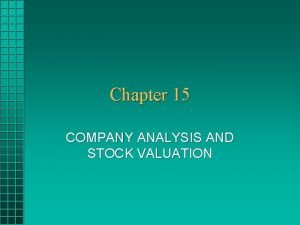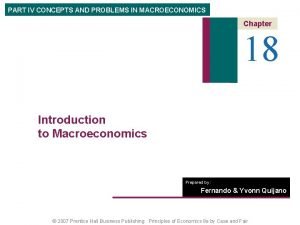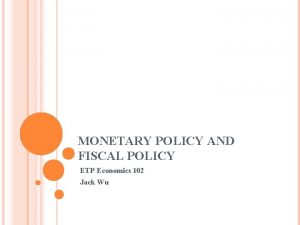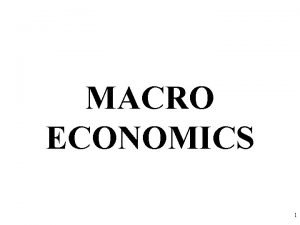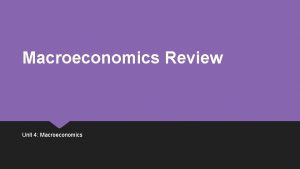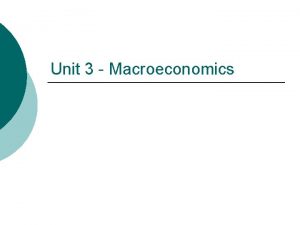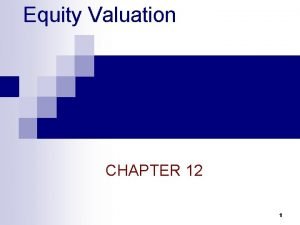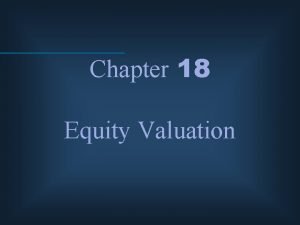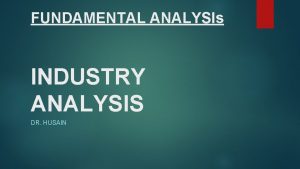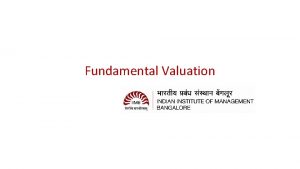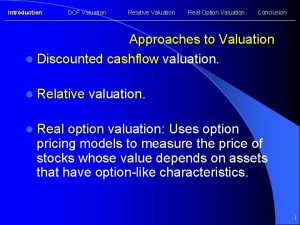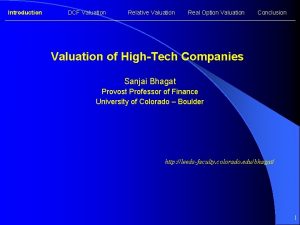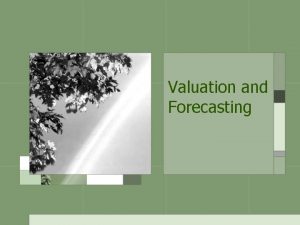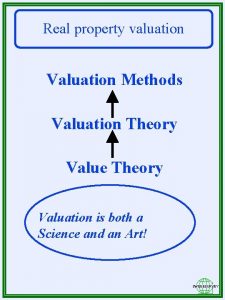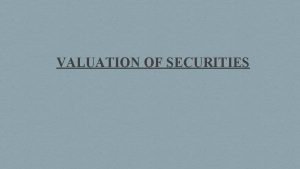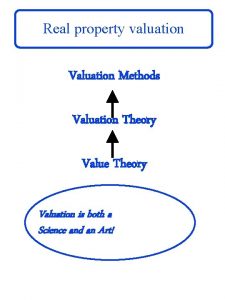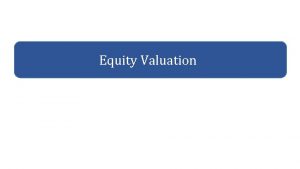Fundamental Analysis Macroeconomics Analysis Industry Analysis Equity Valuation


















- Slides: 18

Fundamental Analysis • Macroeconomics Analysis • Industry Analysis • Equity Valuation Model (Dividend Discount Model- DDM) • Financial Statement Analysis

Macroeconomics Analysis • Global Economy Analysis – affects export, price competition and profits – exchange rate: purchasing power and earnings • Domestic Economy – The ability to forecast the macroeconomy can translate into great investment performance – outperform other analysts to earn extra profits Many variables can affect economy

–Gross Domestic Product (GDP): measures the economy’s total output of goods and services – Employment rate: measures the extent that the economy is operating at full capacity – Inflation measures the general level of prices increase Phillip’s curve – Interest Rate high interest rate reduces PV of cashflows, thus stock values – Budget Deficit large deficit means more borrowing, which implies higher interest rate. – Sentiment consumers and producers confidence

Business Cycles • • business cycles: pattern of recession and recovery peak: the end of expansion and start of recession trough: the bottom of the recession stock returns are decreasing when at peak and increasing at trough • cyclical industries: do well in expansionary periods but poorly in recession, e. g. , durable goods such as automobile and wash machines • defensive industries: little sensitive to business cycles, such food

Industry Analysis • Select a good industry to invest. It is difficult for a firm to do well in a troubled industry • Standard Industry Classification (SIC) code • Value line Investment Survey - reports 1700 firms in 90 industries • Two factors that determine the sensitivity of a firm’s earnings to business conditions: business risk, financial risk

Business risk • Sales sensitivity to business condition some industries are robust (food) while others are not (movie) • operating leverage: the division between fixed and variable costs. – firms with greater amounts of variable cost relative to the fixed cost are subject less to business fluctuations, thus profits are more stable Financial Risk • the degree in using financial leverage (the amount of interest payment) • leverage firm is more sensitive to business cycles

Industry cycles Start-up Build-up Maturity Decline Start-up: increasing growth Build-up/consolidation: stabilized growth maturity: slower growth Decline: shrinking growth

Equity Valuation Model • Dividend Discount Model (DDM) V 0= (D 1+P 1)/(1+k) = D 1/(1+k) + D 2/(1+k)2. . . + Dn/(1+k)n • constant growth assumption V 0 = D 1/(1+k) + D 1(1+g)/(1+k)2 +D 1(1+g)2/(1+k)3 +. . . = D 1/(k-g) or k = expected return = D 1/P 0 + g

Multistage Growth Model • Growth profile may not be constant such as: Expected Growth g 1 g 2 n Time V=D 0(1+g 1)/(1+k)+. . . +D 0(1+g 1)n/(1+k)n + D 0(1+g 1)n(1+g 2)/(1+k)n+1+. . . and so on

Illustration of two-stage Growth Model • A stock pays $1 dividend now and its g 1=30% for 6 yrs. Thereafter, its g 2=6%, its k=15% • yr 1: $1(1+0. 3) =1. 13 yr 2: 1(1+0. 3)2=1. 69 yr 3: 1(1+0. 3)3=2. 20 yr 4: 1(1+0. 3)4 =2. 86. yr 7: 1(1+0. 3)6(1+6%) =5. 12 yr 8: 1(1+0. 3)6(1+6%)2 =5. 42.

Market Value (equity) Market value is the present value of its future dividends Time 0 1 2 3 PV(Dt) 34. 0 37. 8 41. 78 45. 85 Growth rate 11. 17% 10. 52 9. 74 At time 1: FV(Dividends) = 34. 00(1. 15) - 1. 3= 37. 8 At time 2: FV(dividends) = 37. 80(1. 15) - 1. 69=41. 78 Expected return at time 0 (15%) = Yr end dividend/current price + growth rate = 1. 3/34 + 11. 17%

P/E Ratio Behaviors • Price = No growth value/share P 0 = E 1/k + PVGO or • P 0/E 1= [1+ PVGO]/k E 1/k P/E average Time

Pitfalls in P/E Analysis • Denomination of P/E ratio is the accounting earnings (arbitrary rules or historical cost will distort the earnings figures) • Earning should be based on economic earnings (i. e. , net of economic deprecation) • Earnings are future figures vs P/E ratio (which uses past accounting earnings)

Earnings Forecast • Models forecasting: Ei, t = gi + Ei, t-4 +ai(Ei, t-1 -Ei, t-5) where g: growth factor a: adjustment factor E: Earnings • Time Series Analysis ARMA model Exponential smoothing • professional institution forecast • Performance Evaluation MSE or others

Financial Statement Analysis • Preparation of Source/Use Fund Statement • Ratio Analysis – Performance Analysis – Du Pont Analysis

Use/source of Fund Statement • Sources C. Paper $ 5. 8 A/P 17. 8 Div/P 1. 4 S/T debt 4. 6 S/T Lease 3. 8 L/T Debt 20. 6 L/T Lease 25. 0 C/S 3. 2 P/I Cap 0. 6 NI 54. 4 Depreciation 48. 6 Total 185. 8 Uses Cash $ 0. 4 A/R 16. 2 Inv 34. 8 Prep. Ex 0. 4 Lease 82. 8 Others 3. 6 Tax 1. 0 Div. 46. 6 185. 8

Analysis of Use/Source • Sales growth=3. 5% • Uses- major component A/R =8. 72%; Inventory = 18. 73%; Lease = 44. 6% Dividend = 25. 1% • Sources A/P = 9. 5%; L/T debt = 11. 1%; L/T lease = 13. 4% Operation profits = 55. 4% (NI+depreciation) • Why issue shares? • S/T-/LT capital increases so much?

Ratio Analysis • Assets Sales Profit • Liquidity Ratio • Risk Ratio • Du Pond Analysis ROE=Net Income(NI)/Equity (E) = NI Pretax Prof EBIT Sale P. Prof EBIT Sales TA TA E TB IB GPM TAT EM Pretax profit =EBIT - Interest TB = Tax burden IB = interest burden
 Equity analysis and valuation
Equity analysis and valuation Dividend discount model
Dividend discount model Fixed income valuation
Fixed income valuation Importance of equity valuation
Importance of equity valuation Equity markets and stock valuation
Equity markets and stock valuation Equity valuation ppt
Equity valuation ppt Dividend discount model
Dividend discount model Ap macroeconomics supply and demand analysis
Ap macroeconomics supply and demand analysis Company analysis
Company analysis Company analysis and stock valuation
Company analysis and stock valuation Economics subject
Economics subject Macroeconomics
Macroeconomics Crowding out effect macroeconomics
Crowding out effect macroeconomics Crowding out effect macroeconomics
Crowding out effect macroeconomics Lesson 2 activity 45 macroeconomics
Lesson 2 activity 45 macroeconomics Meaning of managerial economic
Meaning of managerial economic What is the theory of liquidity preference
What is the theory of liquidity preference Example of micro
Example of micro What is macroeconomics
What is macroeconomics
